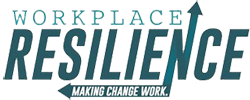 You just came up with the greatest idea ever. How do you go about convincing your team that this new idea, program etc. is the way to go? How do you encourage your team to get on board and commit to this great change that you want to put in place?
You just came up with the greatest idea ever. How do you go about convincing your team that this new idea, program etc. is the way to go? How do you encourage your team to get on board and commit to this great change that you want to put in place?
Exceptional leaders understand that sometimes they need to flex their persuasive muscle.
Understanding organizational Change and how employees react to change, is my sweet spot. However, I was surprised by a recent experience that I had working with a client. In my haste to get to the finish line, I realized that I had left out important steps needed to help someone shift perspective and embrace change.
I was coaching a client on improving their team’s performance. I knew that the team would greatly benefit from some soft skills training. I droned on and on about all the different training pieces that could be presented, but I didn’t sense any traction. On and on I went, like a broken record, for a number of different sessions. However, I was met with a number of reasons why none of the trainings would be the right fit.
I was frustrated. I knew exactly what would solve the problem, but obviously, my client just couldn’t visualize this. At the next session, I decided to take the client through a self-awareness exercise that would help him envision firsthand, what his team could experience.
As we worked our way through the exercise, I closely watched the leader. I began to see how things were beginning to come into focus for him. It began to solidify a number of issues for the leader and what was truly important to him.
Once we had this experience, I asked him to think about his team. What would they gain out of this experience? What would they learn about themselves and how would it help them become better employees and people?
The lightbulb had turned on.
He finally understood how this experience could be a great start to helping his team grow. You could see the excitement and passion as the two of us talked about how we could accomplish this and where this would lead.
And that’s when I realized that I was forgetting an important part of helping someone embrace change. Facts and data were just not going to sell him on the value of this process. Yes, it might be a piece of it, but I needed to do more if I wanted him to move forward. I needed to make him “feel” the change and be emotionally involved in the experience.
I had forgotten something so simple.
Are you in the process of making some changes at work? Don’t underestimate the need to get your people on board. Giving them the facts to back up this change is essential, however, don’t forget how emotion also plays into the process. Help them “feel” the need for change.
















